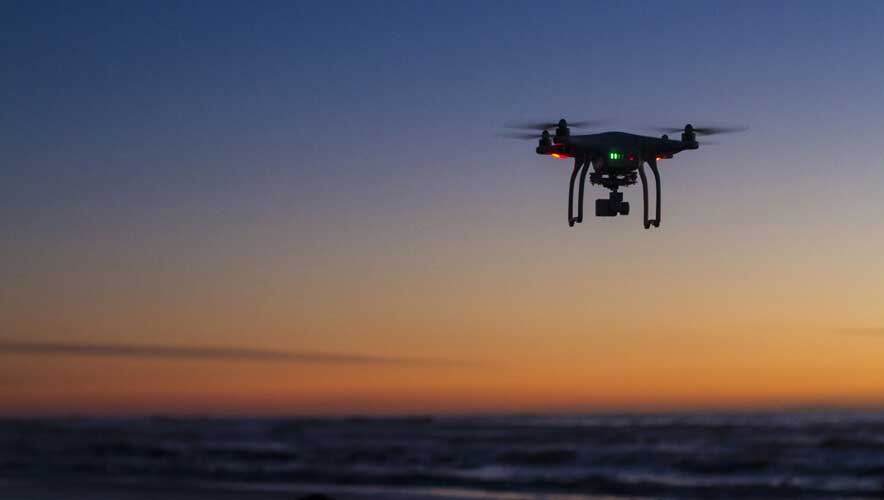How Drones are Enhancing the Security Toolbox
 Security, investigators, and executive protection professionals around the world appreciate the evolution and advancement in technology that have added to their daily everyday carry. But with new operational requirements and threats, security professionals need to be creative with the items they add to their daily use.
Security, investigators, and executive protection professionals around the world appreciate the evolution and advancement in technology that have added to their daily everyday carry. But with new operational requirements and threats, security professionals need to be creative with the items they add to their daily use.
For instance, the use cases for unmanned systems are only limited to the imagination and the legal operating theater. Within North America, there are laws, regulations, and licensing requirements that need to be met to operate an unmanned aerial system (UAS)—commonly referred to as a drone. The U.S. Federal Aviation Administration (FAA), Transport Canada– Canadian Aviation Regulations (CARs), and Mexico’s Directorate General of Civil Aeronautics (DGCA)—all have similar rules. For example, all drones weighing more than 250 grams (.55 pounds) must be registered with the countries’ relevant agencies before being used.
Elsewhere in the world, laws and regulations around the use of UAS did not exist and it was a bit of a “wild west” operating within a legal grey zone. Now, however, these rules are beginning to emerge. In Africa, only a handful of countries have regulations with regards to UAS use. Algeria is one of them, where authorities will confiscate your UAS when you arrive in the country because they are currently banned.
Despite the myriad of rules and regulations—and the lack of them in some instances—security organizations are beginning to use UAS for surveillance.
In the United Kingdom, for example, in 2016 the newspaper The Echo reported that police used a UAS ahead of a convoy during predawn raids in Liverpool. The UAS used in the morning raid was to assist the operation and to ensure officer safety.
During a presentation a few years later, Inspector Force Coordinator Adam Cooke mentioned the cost savings with regards to UAS operations versus traditional aircraft use. The cost benefit of operating a UAS versus a traditional four-person crew helicopter is apples versus oranges. UAS preparation and cost when compared to traditional aircrafts are in the thousands of dollars. Traditional aircrafts require flight crews, equipment maintenance, and fuel—just to name a few items. UAS operations require the same but a UAS can cost much less than a helicopter or airplane.
Since the Drone Revolution started in 2010, I have had the opportunity to use and manage UAS in some unique ways—including as part of an everyday carry when using micro systems, UAS that weigh less than 250 grams. When used properly, these tools can enhance security practitioners’ capabilities exponentially from help in identifying the best location for a camera, checking perimeter fencing, or inspecting equipment—the sky’s the limit.
When a micro system will not cut it, UAS can be scaled up to fit the need. While operating remotely outside of North America, a team contacted me with a unique problem. They wanted to use a UAS for surveillance ahead of a vehicle convoy to identify threats while the moved some high value cargo. The operational location was essentially an unpopulated no man’s land.
We ultimately decided to use a UAS gas-powered fixed-wing stall landing system with eight hours of flight time, decent cruising speed, and some custom-built optics. The concept was great, however, there was a problem with the existing infrastructure. After some creative problem solving, we were able to launch the operation and the program is still operational with some upgrades thanks to the constant innovation of UAS.
Along with private security teams, wildlife conservation services are also using UAS to combat and surveil poachers and track animals and animal migration patterns. UAS operations globally are even protecting endangered species by protecting not only the endangered animal but also its habitat.
For instance, a logistics company was having issues with last-mile border-crossing attacks. To mitigate the threat, the company’s security director decided to use an off-the-shelf quadcopter to conduct surveillance and keep an eye on the crossing. On more than one occasion, the UAS alerted the security team to contact authorities to take action on an issue while minimizing any losses.
UAS use is also increasing for overseas close protection teams, which are using these systems to advance routes and avoid bad actors. Some security teams are using Unmanned Sea and Underwater Systems to patrol waterways, sub-terrain water system infrastructure, and the hulls of their clients’ boats. There are even some professionals that are using Unmanned Land Systems to perform property inspections, surveillance, and patrols.
Most modern unmanned systems are now intuitive and cost effective. The applications are endless, making it worth consideration for your everyday carry toolbox.
James A. Acevedo, CPP, CPS, is founder of StarRiver Inc. and a member of the ASIS International Security and Applied Sciences Steering Committee. Acevedo is also the Unmanned Systems Committee chair of the ASIS Supply Chain and Transportation Community and secretary for the ASIS Intellectual Property Protection Community.










